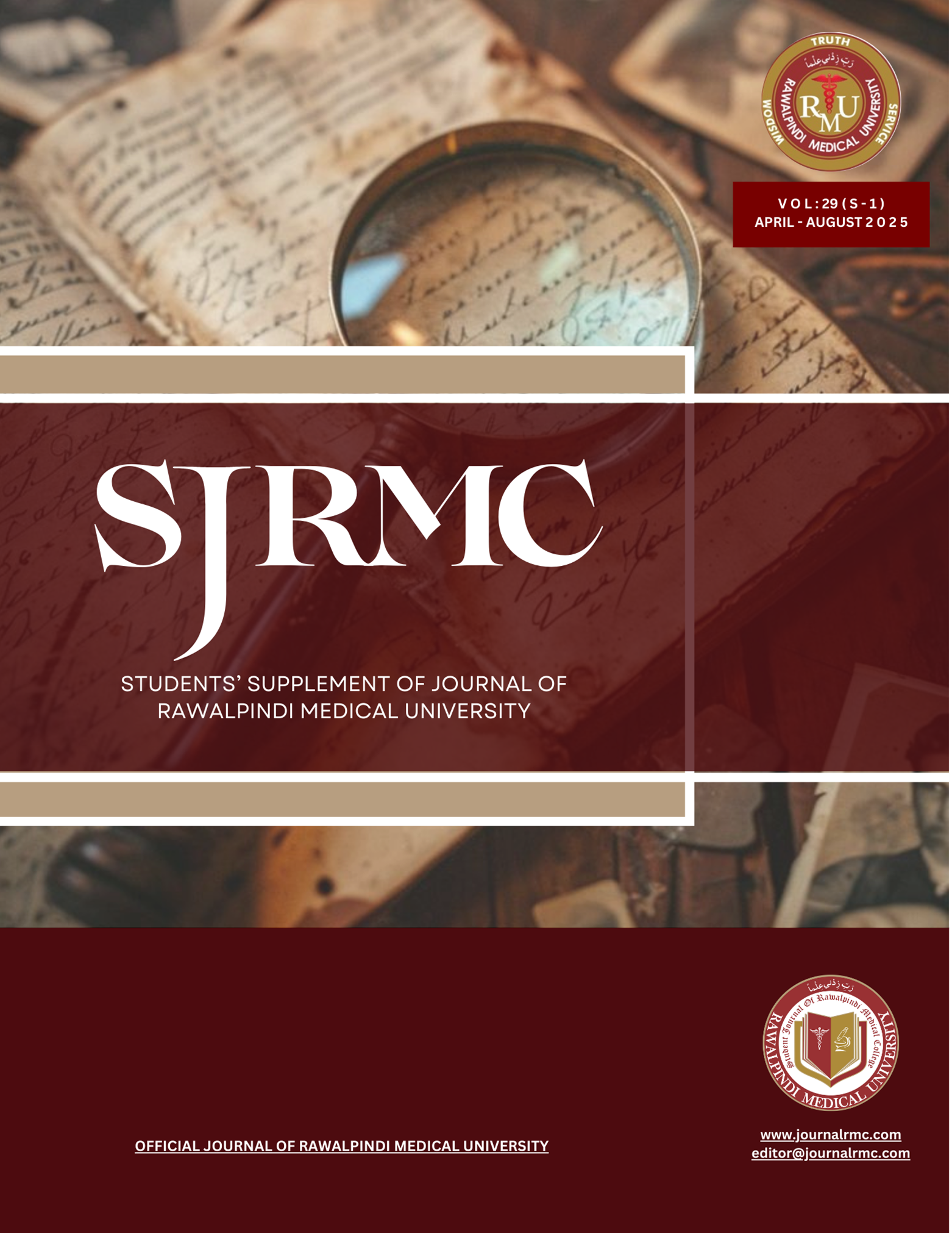Abstract
Bleeding time is a vital haemostatic parameter used to assess the platelet function and the overall blood coagulation. Bleeding time is defined as the average time taken by incision to stop bleeding.
This study aimed to evaluate mean bleeding time, conditions that might cause the fluctuation in the mean bleeding time and how early indication of such conditions might help elevate the medicine sector.
The population of the study were the universities students of first year MBBS of Rawalpindi Medical University involving the standard age group of 18 to 22 years. The Duke’s method was used to assess bleeding time. This method involves pricking participants’ earlobe or finger with a special needle or lancet, and the bleeding time is measured using a stopwatch.
To observe the several factors affecting the main bleeding time, a specifically designed questionnaire keeping in view the principles of ethics including confidentiality, autonomy and beneficence was developed which assess the participant’s lifestyle: including their physical activities, habits, medications, and addictions of drugs (if any). The family history, genetic disorders, and the health problems such as anaemia would be taken into the account. These factors would be analysed and their role in fluctuating the mean bleeding time would be linked.
The data collected contributed to understanding bleeding time variations and optimizing treatment strategies for early intervention, ultimately improving patient’s outcomes.

